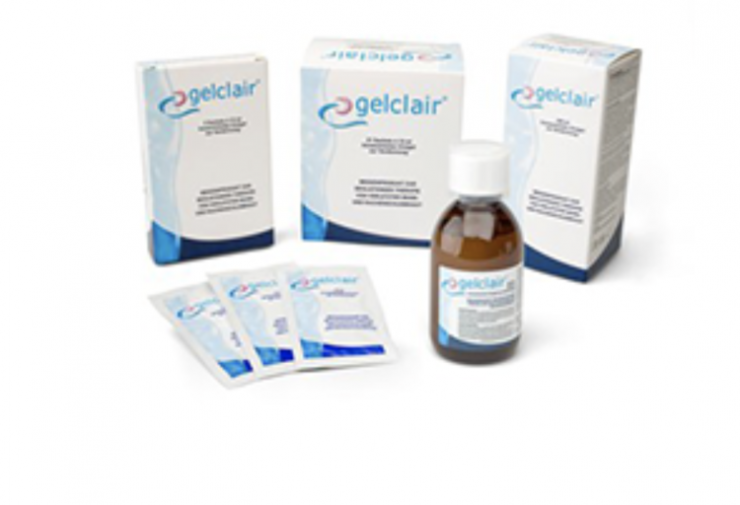A new sales and marketing venture with a unit of Mission Pharmacal gives DARA BioSciences (NASDAQ:DARA) a formidable leg up in the oncology supportive care sector to address ongoing areas of medical need.
A 20-person national sales team contracted from Mission’s Alamo Pharma Services will promote DARA’s products, including Soltamox, Gelclair, and Bionect, as well as three Mission products—Ferralet 90 for anemia, BINOSTO for osteoporosis, and Aquoral for chemotherapy/radiation therapy-induced dry mouth. The Alamo sales reps will work under the direction of two DARA sales managers.
“This dedicated sales force can provide a formidable product portfolio that addresses many of the common challenges and side effects that cancer patients deal with on a daily basis, including oral mucositis, loss of bone density, radiation dermatitis, dry mouth, anemia, and long-term adherence to tamoxifen,” DARA’s CEO and CMO, Dr. David Drutz, says in an interview with BioTuesdays.com.
DARA initially had been using a five-person sales team of highly specialized regional business directors to target clinicians who are treating breast cancer patients experiencing difficulty swallowing, like the elderly. But the company quickly realized the market was much larger than previously thought, requiring sales reach and frequency. Adding more products further emphasized the importance of this strategic approach.
“We decided to change our sales strategy and go with sales reps, who are rewarded more on the bonus side and less on the salary side,” he adds. The sales force is expected to be in the field at the start of 2014. Last month, DARA raised $2.55-million to fund its obligations under the accord with Mission and Alamo.
DARA’s Soltamox is the first and only oral liquid formulation of tamoxifen citrate, which is widely used in tablet form as an adjuvant therapy for patients at high risk of estrogen-receptor positive breast cancer recurrence after treatment. The company launched Soltamox in 2012 as a convenient once daily treatment for patients who prefer or need a liquid formulation.
There are approximately 230,000 newly diagnosed breast cancer patients each year in the U.S., with more than 1.8 million annual prescriptions for tamoxifen. “We aim to capture the market for patients who would prefer an alternative to taking pills,” Dr. Drutz states.
He figures use of tamoxifen may grow based on reported results of the ATLAS trial, which demonstrated a further significant reduction in mortality when tamoxifen therapy is extended out to 10 years from five years. In addition, the study also demonstrated a significant reduction in recurrence rates of breast cancer beyond five years of treatment.
An amendment to the National Comprehensive Cancer Network Guidelines this year recommends that the use of tamoxifen now be considered beyond the standard treatment of five years, extending it for up to 10 years.
DARA’s Gelclair, which was launched in April, is a patented bioadherent oral gel rinse that creates a protective film over mouth sores. It provides fast and effective pain relief for the treatment of oral mucositis caused by radiation treatment and chemotherapy. The painful disorder limits the ability of patients to eat and drink fluids and has the potential to interrupt cancer treatment.
There are some 400,000 patients diagnosed annually with oral mucositis in the U.S., and Dr. Drutz points out that up to 40% of all cancer patients are likely to develop oral mucositis at some point.
“There is a lack of effective treatment options for oral mucositis, and Gelclair could offer meaningful advantages over existing therapies, such as mouthwashes, topical antiseptics, barrier agents and artificial saliva,” he says. In addition, Gelclair is a hyaluronic acid-based product, which may aid healing. “We believe Gelclair may offer significant improvements in the quality of life of our patients.”
DARA’s portfolio also includes Bionect, a patent-protected cream/gel and the only commercially available low molecular weight, hyaluronic acid treatment for burns and skin damage associated with radiation therapy.
According to Dr. Drutz, the low molecular weight formulation allows for penetration to hydrate the dermal matrix, which can help resolve inflammation and enable cancer patients to complete a course of radiation therapy without interruption.
Up to 85% of cancer patients receiving radiation therapy will experience skin reaction or damage, he points out, and existing topical steroids and emollient creams provide limited treatment options.
As part of its strategy, Dr. Drutz says that DARA has created a leveraged portfolio of oncology support products that possesses the potential for multi-product use in the same cancer patient. Treatment with Soltamox, he explains, gives DARA access to patients with breast cancer who may also receive radiation therapy, for which Bionect could be prescribed. As well, some breast cancer patients will also develop oral mucositis from their therapy, making them candidates for Gelclair.
“We are having lots of discussions to in-license or acquire additional marketed and/or near-term oncology products for supportive care that would fit with our strategy of leveraging our line of products in a patient,” he adds.
DARA’s primary drug development program is targeting painful chronic chemotherapy-induced peripheral neuropathy (CCIPN), which is another area of significant unmet medical need. DARA’s KRN5500 drug candidate is a non-opioid new chemical entity that demonstrated rapid onset of action and a statistically significant reduction in pain when dosed by IV once weekly in a Phase 2a trial.
Dr. Drutz says KRN5500 has been reformulated to make it more commercially attractive. It received fast track designation from the FDA in 2011, and DARA has applied for orphan drug designation in painful CCIPN. DARA is actively seeking a development and commercial partner for KRN5500, he adds.
“We are a commercial organization, and that’s where we intend to focus our resources,” he says. “With orphan drug designation, we will have taken KRN5500 to where we think it is highly partnerable, and we hope to conclude a deal in 2014.”







